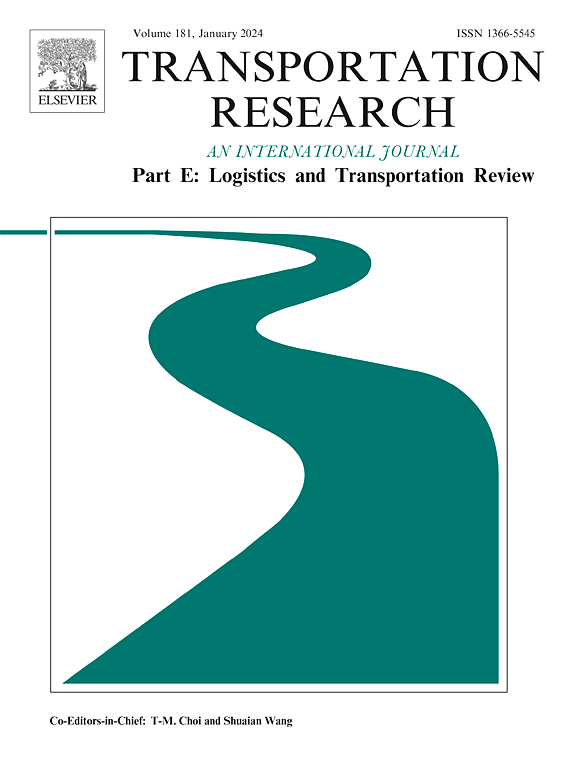Selection of R&D techniques: The influence of spillover effects and government subsidies
IF 8.3
1区 工程技术
Q1 ECONOMICS
Transportation Research Part E-Logistics and Transportation Review
Pub Date : 2025-02-01
DOI:10.1016/j.tre.2024.103879
引用次数: 0
Abstract
This study examines the research and development (R&D) investment strategies of two competing logistics firms under the influence of spillover effects and government subsidies. Firms must decide whether to invest in similar or distinct R&D techniques, or to forgo R&D entirely. Spillover effects occur only when firms adopt different R&D techniques, including cases where one firm chooses not to invest in R&D while the other does. Our findings show that high spillover effects discourage firms from investing in R&D, while low spillover effects induce firms to choose the same R&D techniques. However, social welfare cannot be maximized under the equilibrium state established by free competition among firms. Subsequently, we investigate the impact of government subsidies on firms’ operational decisions, finding that firms choose different R&D techniques when spillover effects are low and R&D costs are high. Notably, government subsidies can partially rectify the misalignment between the Nash equilibrium and maximization of social welfare. This implies that, under certain conditions, government intervention can achieve a dual optimization of firm profits and social welfare. This is crucial for supply chain management, as it ensures both logistics efficiency and competitive pricing, ultimately benefiting the entire supply chain system.
研发技术选择:溢出效应与政府补贴的影响
本文研究了在外溢效应和政府补贴的影响下,两家竞争物流企业的研发投资策略。公司必须决定是投资类似的或不同的研发技术,还是完全放弃研发。只有当企业采用不同的研发技术时,溢出效应才会发生,包括一家企业选择不投资研发而另一家企业选择投资研发的情况。研究发现,高溢出效应会阻碍企业对研发的投资,而低溢出效应会促使企业选择相同的研发技术。然而,在企业间自由竞争建立的均衡状态下,社会福利不可能最大化。随后,我们考察了政府补贴对企业经营决策的影响,发现当溢出效应较低、研发成本较高时,企业会选择不同的研发技术。值得注意的是,政府补贴可以部分纠正纳什均衡与社会福利最大化之间的错位。这意味着,在一定条件下,政府干预可以实现企业利润和社会福利的双重优化。这对供应链管理至关重要,因为它既保证了物流效率,又保证了有竞争力的价格,最终使整个供应链系统受益。
本文章由计算机程序翻译,如有差异,请以英文原文为准。
求助全文
约1分钟内获得全文
求助全文
来源期刊
CiteScore
16.20
自引率
16.00%
发文量
285
审稿时长
62 days
期刊介绍:
Transportation Research Part E: Logistics and Transportation Review is a reputable journal that publishes high-quality articles covering a wide range of topics in the field of logistics and transportation research. The journal welcomes submissions on various subjects, including transport economics, transport infrastructure and investment appraisal, evaluation of public policies related to transportation, empirical and analytical studies of logistics management practices and performance, logistics and operations models, and logistics and supply chain management.
Part E aims to provide informative and well-researched articles that contribute to the understanding and advancement of the field. The content of the journal is complementary to other prestigious journals in transportation research, such as Transportation Research Part A: Policy and Practice, Part B: Methodological, Part C: Emerging Technologies, Part D: Transport and Environment, and Part F: Traffic Psychology and Behaviour. Together, these journals form a comprehensive and cohesive reference for current research in transportation science.

 求助内容:
求助内容: 应助结果提醒方式:
应助结果提醒方式:


